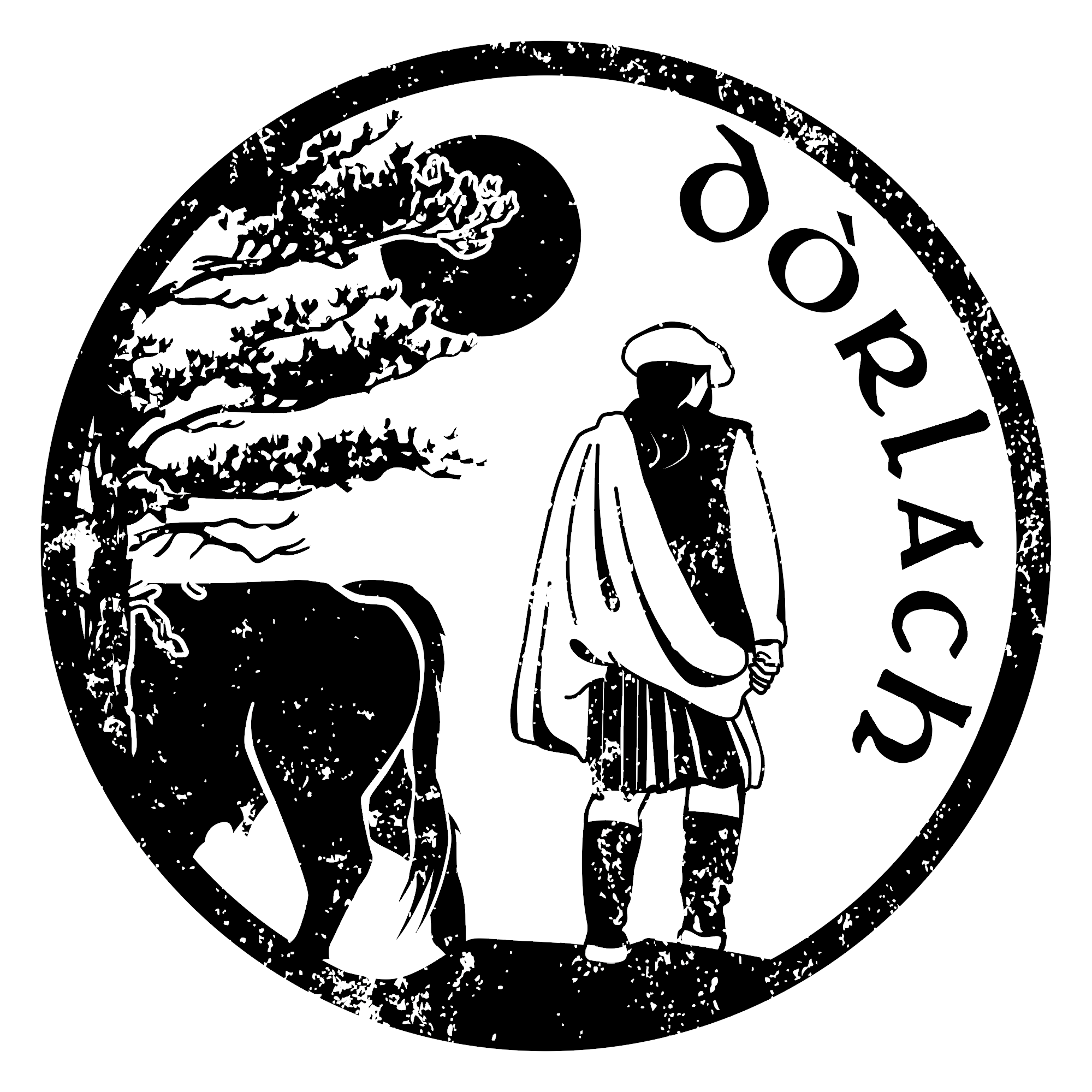The following article first appeared in Dòrlach magazine Iomradh (Samhuinn 2019)
Popular representations of the Highlands often revolve around mountains, hills and castles. Yet, any Gael knows that the Highlands are not the Highlands without the sea, without the lochs and without the river. Water is omnipresent throughout the land and there is no need to wonder why it has so strongly influenced the imagination of the Gaels – in Scotland of course, but also in Ireland and the Isle of Man. And indeed, it seems to come from long ago, as it is also very deeply rooted in the cultures of the Gaels’ direct cousins, the Brythons – Bretons, Welsh and Cornish. Once again, a quick look at a map is enough to tell us why.
One of the beliefs that we can trace further back is tied to a fundamental aspect of life: Death. There are many ways in which death and the travel to the afterlife are seen and conceptualised in Celtic cultures, but one stands out. From Brittany to the MacKay Country, and from Munster to Angus, there seems to be an ancient association between water, islands and death. Anyone living near Ballachulish, Moidart or Gairloch will immediatly think about the burial-islands that are spread throughout the Scottish Highlands. Not much is known about them, and during my own research work on their history I found it very difficult to come up with sources.1 Yet, when looking at the broader traditions, things start coming together.

From the oldest Gaelic texts of the Middle Ages we can find mentions of the mythical islands of the Dead: the Teach Duinn in southern Ireland, mentioned in the Lebor Gabála Érenn (‘Book of the Invasions of Ireland’). And the famous Tír-na-nÓg, ‘Land of the Young’, to which the bard Oisean goes for three hundred years. The latter was still mentioned in the Molenez archipelago in the early 20th century by sailors there who called it Bro ar Re Yaouank – which also means ‘the Land of the Young’. And of course, anyone familiar with the Arthurian legends will have heard of Avalon. In the West of Brittany lies Bae an Anaon, ‘The Bay of the Dead’. It is there, or so we say, that the souls gather, awaiting the ferry that will take them across the sea to the land of the Dead. This boat was called Bag ar Re Varv, the ‘Boat of the Dead’, and in other parts Bag-Noz, the ‘night-boat’ that sailors could see, seemingly empty, yet with a low waterline from the weight of the dead souls it carries.2 Such a boat, the bád sí, would also be seen at times by Irish sailors3, and I would not be surprised if it was sometimes seen in Scotland too.
These associations are not only in our myths, beliefs and tales, but also in our languages, once again hinting at some old Celtic connection lost to time. In Brittany, it is still common to say of someone roeñvet en deus war Gornôg, ‘he rowed westward’, to acknowledge their passing. This saying is not unknown to the Gaels, who in Ireland would say ag dul siar, and in Scotland a’ dol siar; I was told by a Lewis woman that it was understood, but only in a poetic context. Allan Turner tells us in his own work that some old Gaels would still say tha mi a’ feitheamh ris an aiseag, ‘I am waiting for the ferry’, on their deathbed not so long ago.4 More expressions exist in these languages without a doubt, and they all echo these stories.
Finding a way to describe these beliefs is difficult, as English words are loaded with the cynicism and distanciation English-speakers often display towards these things; that tales, myths and legends are nothing but made-up stories to entertain us. In Gaelic, I would certainly say naidheachd, ‘news, story’, which is more neutral. Or perhaps I would begin my naidheachd by saying tha cuid ag ràdhainn, ‘some say’. That is certainly what I would do in my native Breton: lavaret e vez, ‘it is said’. Indeed, it is said in Brittany that sailors die with the lowering tide, and with favourable weather to help them in their journey. Félix Tual, former-mayor of Molenez, died thus in 1923, after having received confirmation that the tide was going away, and that the wind blew gently in the right direction and that his boat was anchored nearby. My own grandfather, ferryman of my native Enez Arzh (‘the isle of the bear’, enez being pronounced in our dialect like the Gaelic innis), certainly left on a good day, with the lowering tide.
I have no doubt that some amongst you will find here the echo of something else. For people like us, water is both life and death. The French and the English see water as a border, a wall that ends the land on which they are so comfortable. To us, water is a road, a bridge, and the promise of journeys, trade and contact. It is thus no surprise that it is also the road we take when we leave on our final journey west.
Notes:
- Fañch Bihan-Gallic. 2015. Eileanan-Cladh ann an Alba – Burial-islands in Scotland (University of Edinburgh: MSc dissertation). It is available online and copies should be available in the Gairloch Heritage Museum’s library, Montrose Museum and Art Gallery’s library, and in the Glencoe Heritage Museum.
- Many interesting things about these are said by Anatole Le Braz in his Légende de la Mort (1905).
- Críostóir Mac Cárthaigh. 1999. “An Bád Sí: Phantom Boat Legends in Irish Folk Tradition”, in Patricia Lysaght, Séamas Ó Cathain and Dáithí Ó hÓgáin, Islanders and Water Dwellers, pp. 165-176.
- Allan Turner. 2014. Beliefs and practices in health and disease from the Maclagan Manuscripts (University of Edinburgh, unpublished PhD thesis), p. 88.
